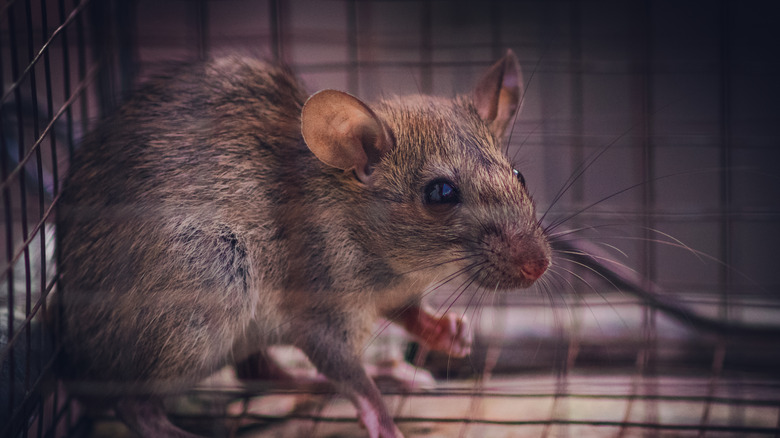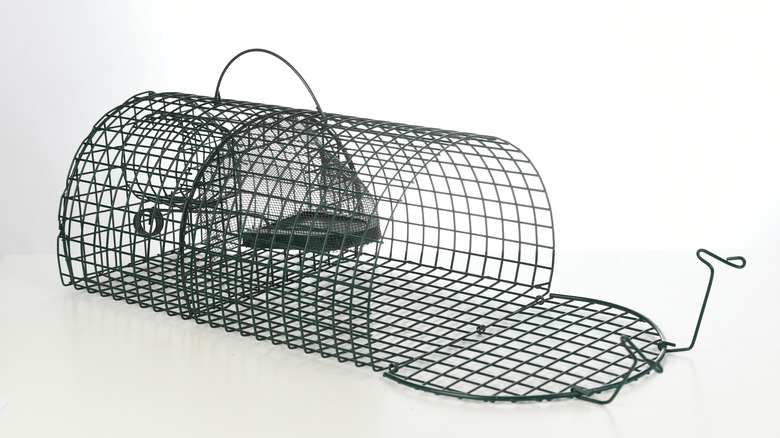Museum Mousetrap Exhibit Proves Deadly 155 Years Later
According to The Atlantic, 4,400 patents exist in the United States for mousetraps. As ThoughtCo. explains, a mousetrap is a device that is typically used indoors to catch the synonymous culprit. Truly Nolen, a pest control company, writes that pest control has been a global issue for centuries. In fact, the Victoria and Albert Museum in the U.K. has a mousetrap in their collection that was first designed in the Middle Ages. That being said, The Museum of English Rural Life also has several mousetraps in its possession. Located at the University of Reading, the museum aims to educate individuals on the lifestyles of farmers and artisans from the past.
The museum notes that it hopes to align the influence of the past with the present. Per the BBC, this is exactly what occurred in 2016. Early that year, Ollie Douglas, an assistant curator at the Museum of English Rural Life, found that a 155-year-old mousetrap had claimed a victim for the first time in perhaps over a century. With his discovery, Douglas sent an email that read, "There appears to be a dead mouse in this mousetrap which is not described as being there on the database" (via CNET). A blog post on the museum's website explains that they themselves have set up traps for pests, only to come up empty-handed.
New mouse, old trap
Although CNET reports that it's unknown what exactly occurred to the mouse, there are some theories. The BBC states that it's possible that the mouse entered the trap, which features a box-like design and a string inside, to make a nest. Douglas, who found the mousetrap in a cabinet, also explained that "We think that the mouse chewed at the label and got interested in chewing at the string attached to the label." As for how the mouse got inside the building, The Museum of English Rural Life's blog jokingly wrote that the mouse got past security. However, it's likely that the mouse entered the museum in the midst of construction.
The blog revealed that the museum regularly cleans and inspects items, although they did note that the same treatment was not provided to items made with wood or metal. Per CNET, the trap that captured the doomed mouse was sold by a British company called Colin Pullinger & Sons and was known as the "Perpetual Mousetrap." It's unknown what year this specific mousetrap was made. However, the device was patented in 1861 and was said to last a lifetime. Douglas told the BBC that in this case, age was just a number. He said, "And here it is, still capable of catching mice, even though it was not baited."
The Pullinger mousetrap was intended to be humane
The Chichester Post explains that Colin Pullinger was born in 1814. Per the BBC, the "Perpetual Mousetrap" was designed by Pullinger himself and featured a seesaw mechanism. Pullinger created the mousetrap to be humane. Bait was placed in the trap and the mouse would enter directly onto a beam (via Popular Mechanics). The mouse was then forced to go left, which moved the see-saw in that same direction. In other words, the mouse was now trapped and unable to return to the entrance. With no escape, the mouse was forced deeper into the trap where it remained. Its clever arrangement meant that another mouse could enter on the right side, trapping multiple mice at once.
According to The Novium Museum, Pullinger's trap did not physically hurt the mice it would catch and this became a big selling point. It's estimated that by 1885, he had sold 2 million traps. The Chichester Post writes that the mousetraps were made with wood from forests that belonged to the Duke of Richmond. Pullinger produced the traps in a Sesley-based factory that had horse-powered machinery, which allowed him to make one mousetrap in less than five minutes. Pullinger died in 1889 and his son took over the business until its closure in 1920. At the time of the mouse's discovery at The Museum of English Rural Life, the institution noted that it was unsure if they wanted to bury the mouse or prepare it for permanent display in the mousetrap.


